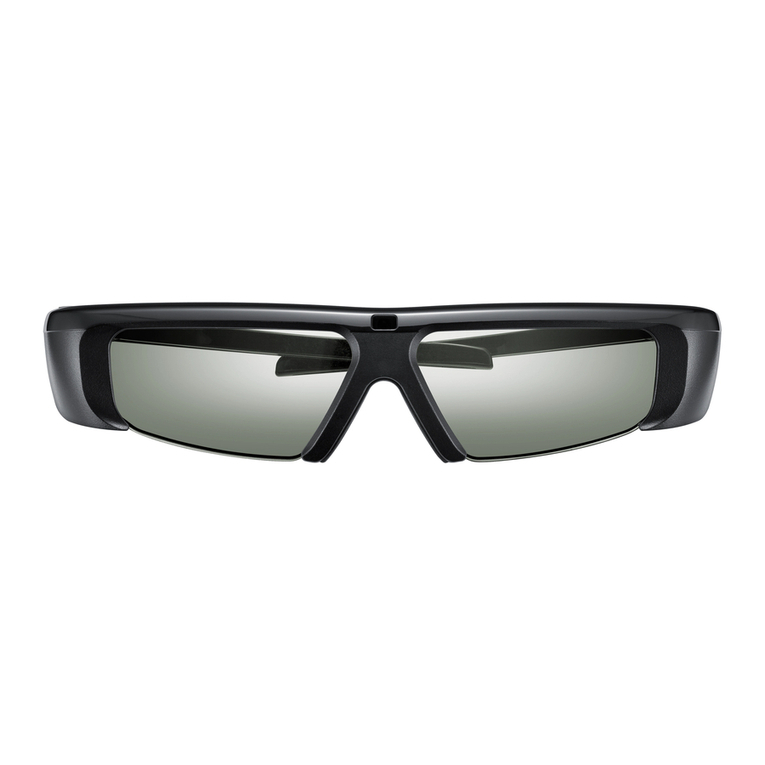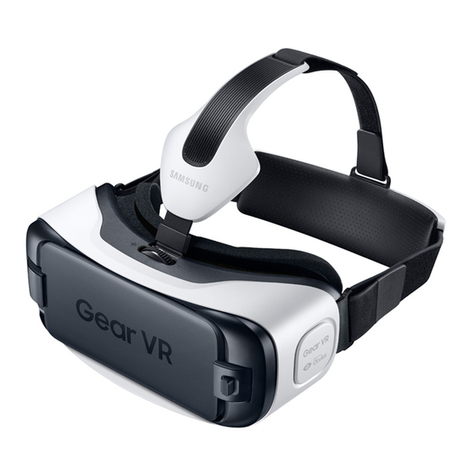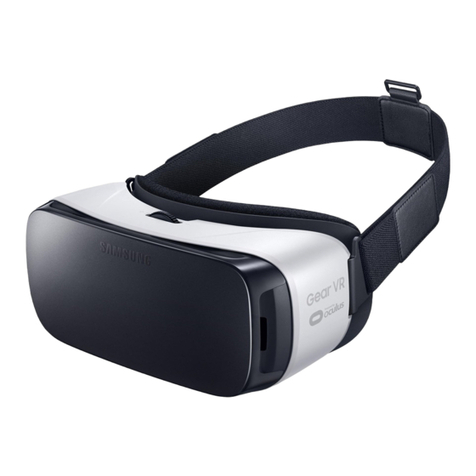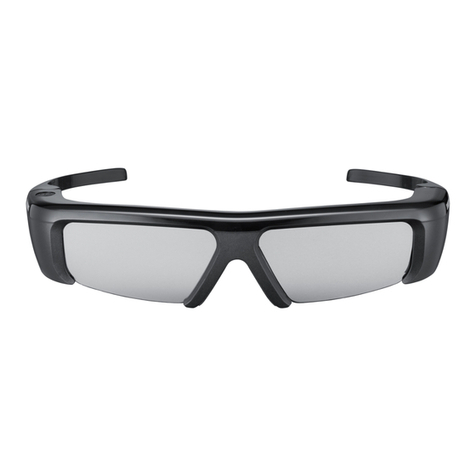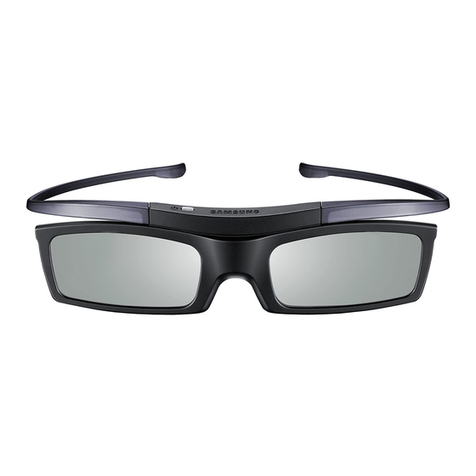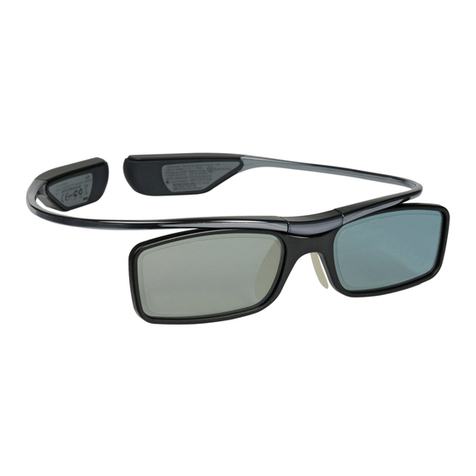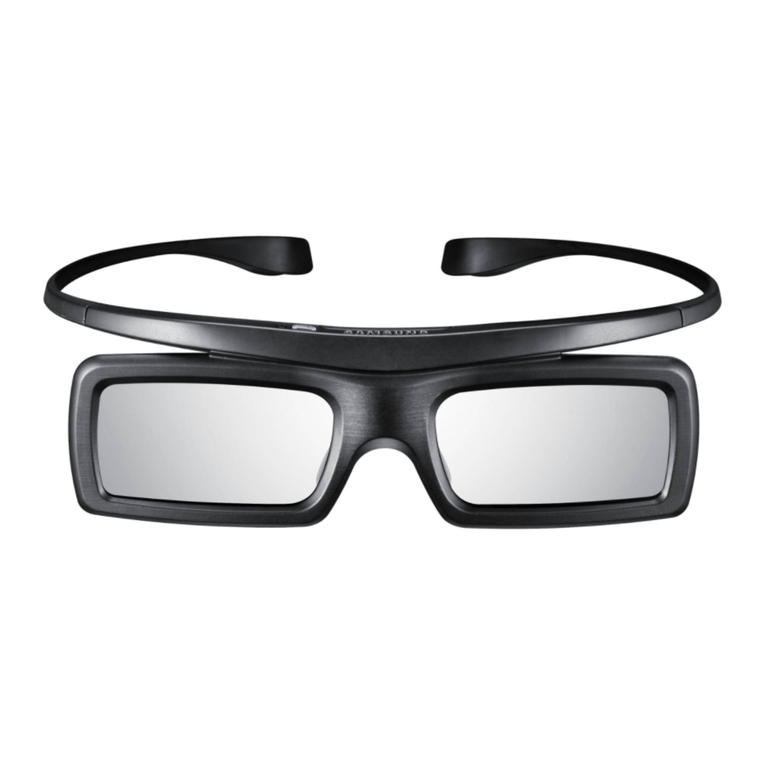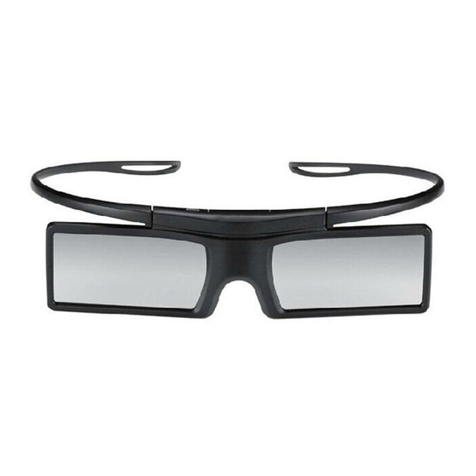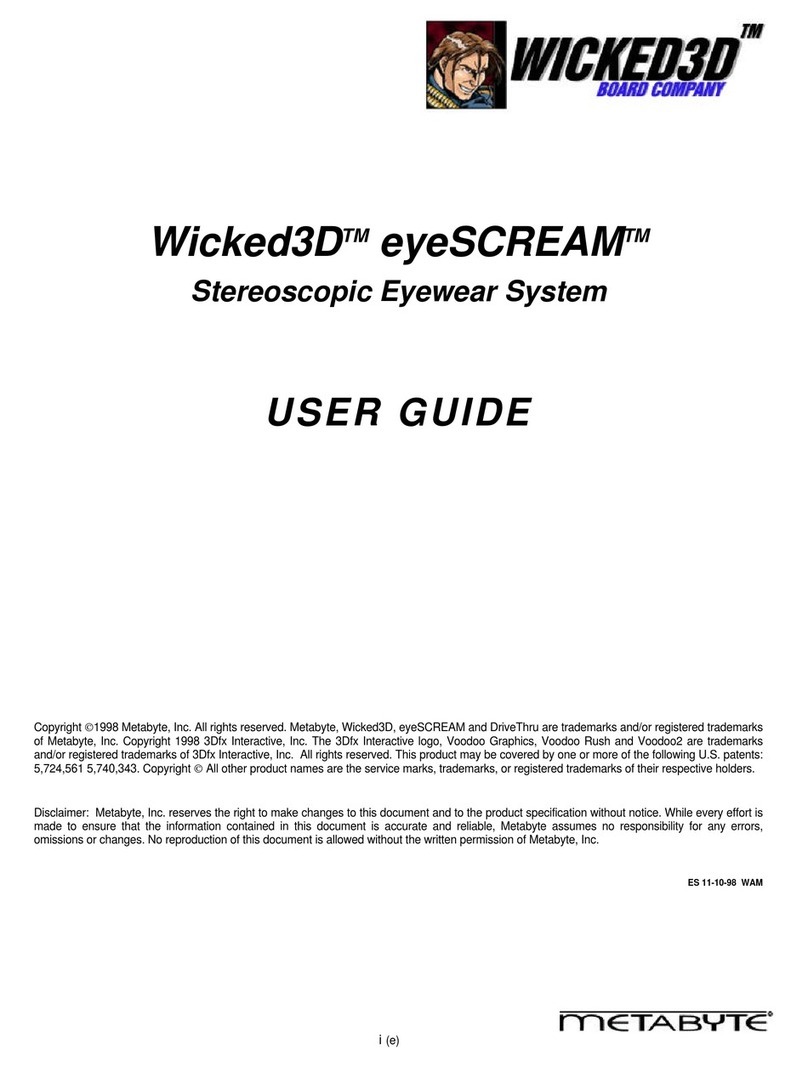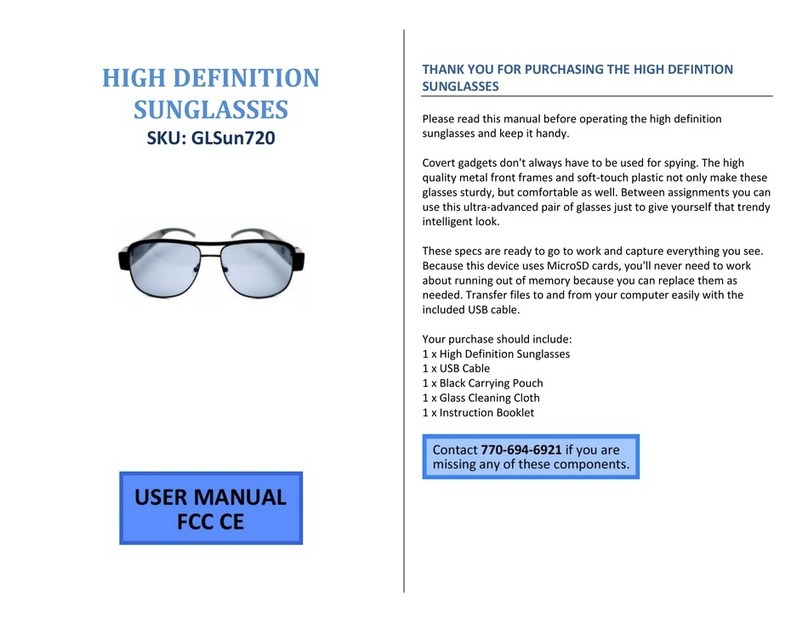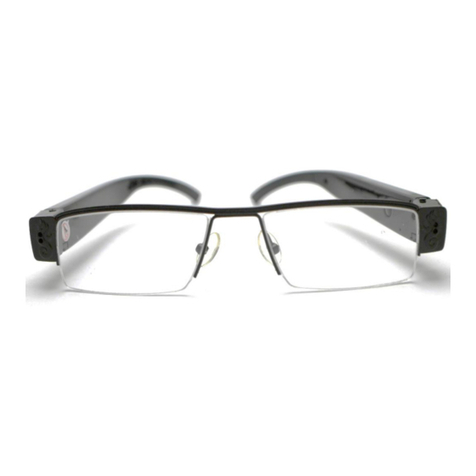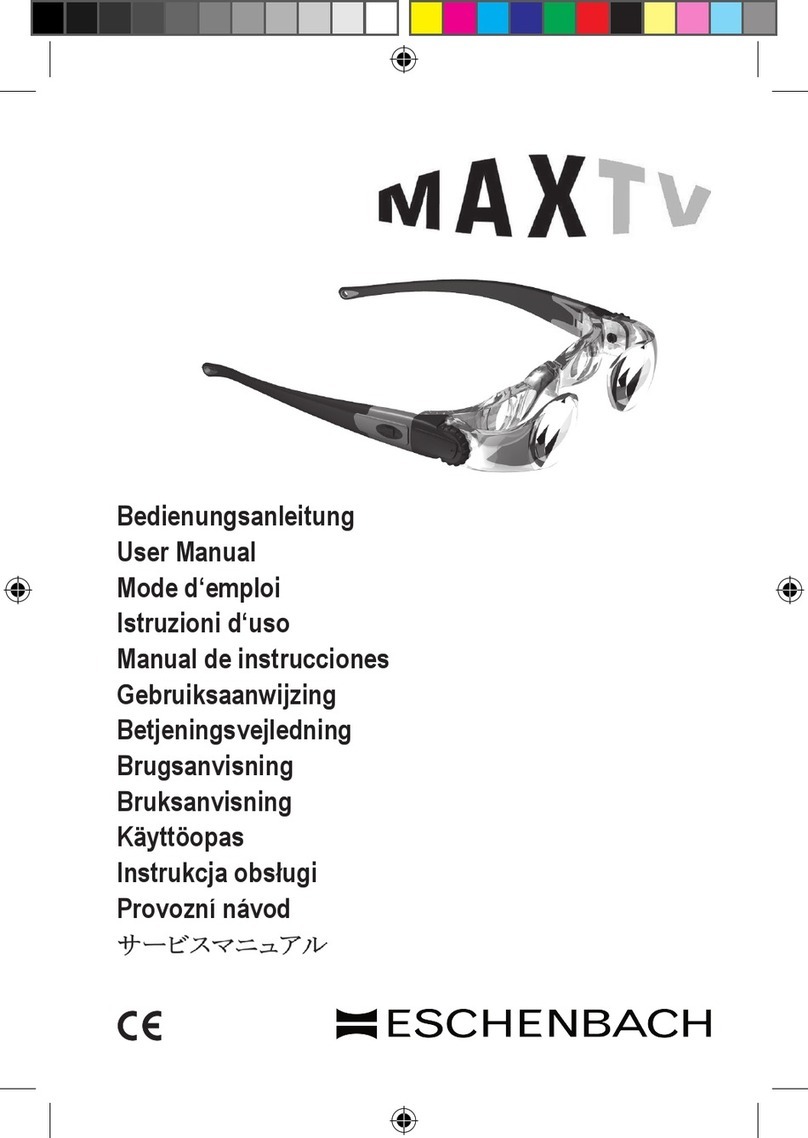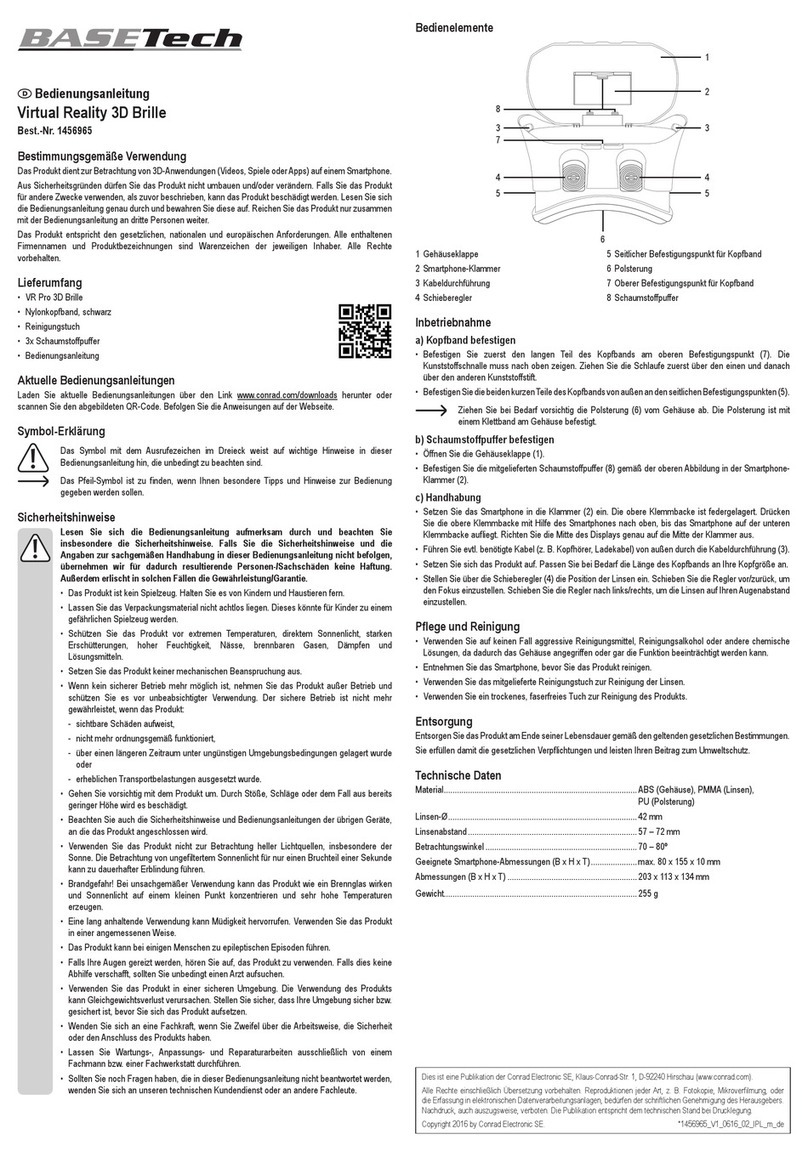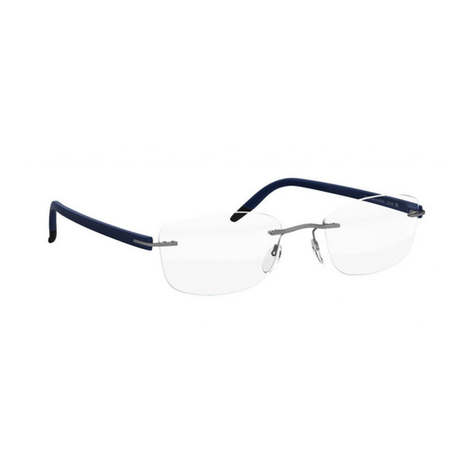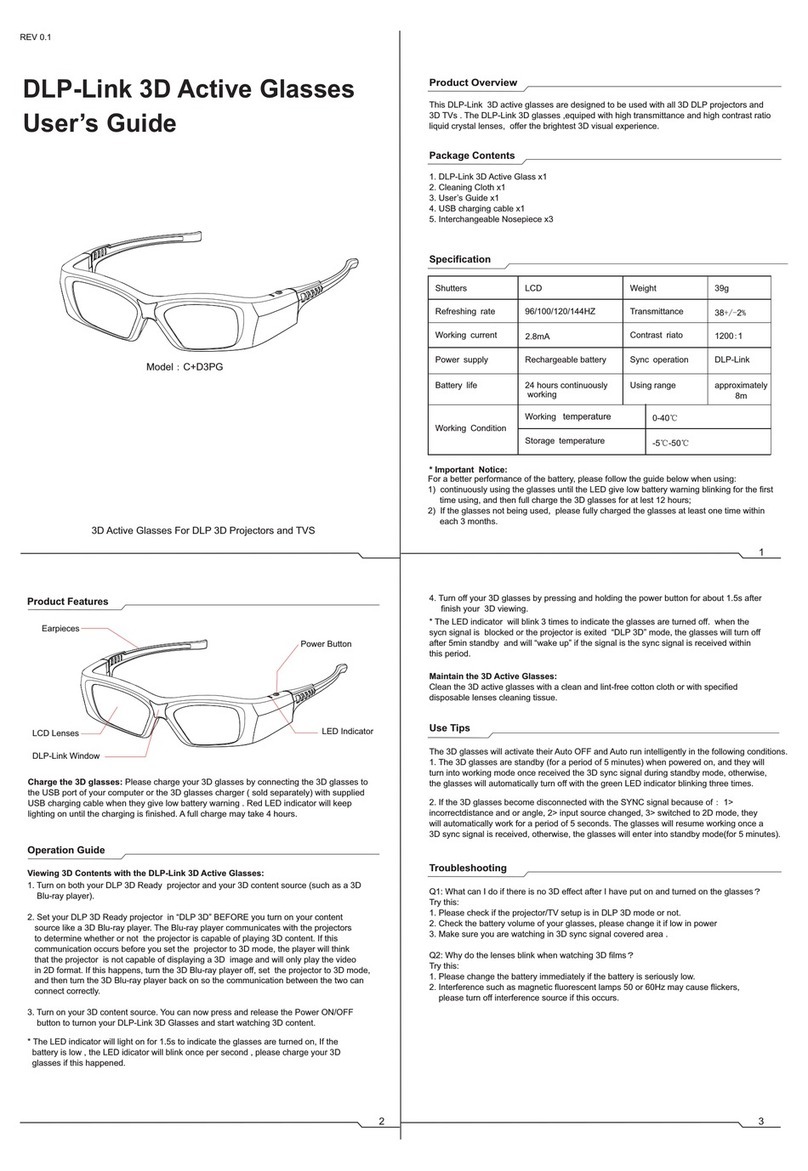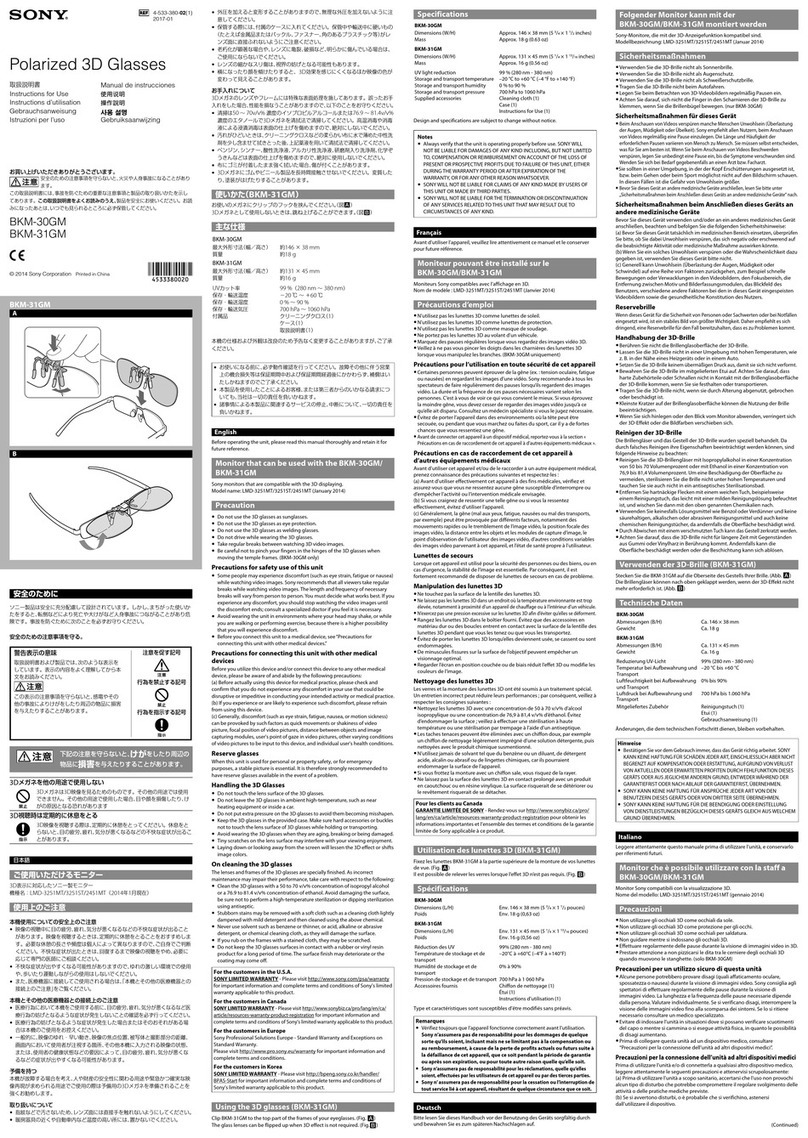
____
~,jj;,'lMf;'J.2?iT:i;;
_
•
3D
Viewing Guidelines
When watching
3D
images under afluorescent lamp (50Hz -60Hz) or a 3 wavelength
lamp,
you
may
notice a
small
amount of screen flickering, If
so,
dim
the
light or tum the
lamp
off.
If
you
change the channel or input mode when watching
3D,
3D
glasses are turned
off, and the screen could
be
displayed abnormally. After awhile,
3D
glasses are
automatically turned
off.
If
the
TV Emitter becomes disconnected due
to
either achange
in
the
viewing angle
or distance,
the
3D
glasses tum off automatically after 5minutes. If
this
occurs,
the
red
LED
blinks three
times.
*
3D
glasses
may
not
work
proper1y
due
to
noise
interference
from
other
electric
devices
such
as
a
PDP
or
LCD
lV
under
specific
condrtions.
Be
sure to stay within the viewing angle and optimum TV viewing distance when
watching
3D
pictures.
?<:
Otherwise,
you
may
not
be
able
to
enjoy
proper
3D
effects.
SAFETY PRECAUTIONS
Please read these safety instructions to ensure your personal safety and prevent
property damage.
WARNING
IMPORTANT
SAFETY
INFORMATION.
READ
THE
FOLLOWING
WARNINGS
BEFORE YOU OR YOUR CHILD USES THE 3D FUNCTION.
•Parents' careful supervision
is
required particularly when children or teenagers view
3D
images.
Photosensitive Seizure Warning and Other Health Risks
-Some viewers may experience an epileptic seizure
or
stroke when exposed
to certain flashing images or lights contained in certain television pictures
or
video games. If you
or
any
of
your
relatives has ahistory
of
epilepsy
or
strokes, please consult with amedical
specialist
before
using the 3D
function.
-Even those without apersonal
or
family history
of
epilepsy
or
stroke
may
have an
undiagnosed
condition
that
can
cause
"photosensitive
epileptic
seizures."
-
If
you experience any
of
the following symptoms immediately stop watching
3D
pictures
and
consult
a
medical
specialist:
(1)
altered
vision;
(2)
Iightheadedness;
(3)
dizziness;
(4)
involuntary
movements
such
as
eye
or
muscle twitching; (5) confusion; (6) nausea; (7) loss
of
awareness; (8)
convulsions; (9) cramps; and/or (10) disorientation. Parents should monitor
and ask their children
about
the above symptoms. children and teenagers
may be more likely than adults
to
experience these symptoms.
-
Do
not watch
3D
pictures when you feel incoherent, sleepy, tired or sick. Avoid
watching
3D
pictures for
long
periods of
time.
Take
breaks.
Note that watching TV while sitting too close to the screen for an extended period
of time may weaken your eyesight.
Note that watching TV while wearing
3D
glasses for
an
extended period of time
may cause aheadache, fatigue, or dizziness. If you have aheadache, fatigue, or
dizziness, stop watching TV and rest.
Some 3D pictures may startle viewers. The pregnant, elderly, epileptic, and those
suffering from serious physical conditions are advised to avoid utilizing the unit's
3D
functionality.
If you are
in
bad physical condition, sleep deprived, or you have drunk alcohol, we
strongly recommend you not use
3D
glasses
or
view
3D
pictures.
Please take care to
be
aware of the world around you. This product is designed to
be
immersive.
DO
NOT use this product near open stairwells, cables, balconies or
other objects that can be tripped over, run into, knocked down, broken or knocked
over. If you are startled or misconstrue the
3D
images as real, you may crush a
nearby object or injure yourself trying
to
move your
body.
